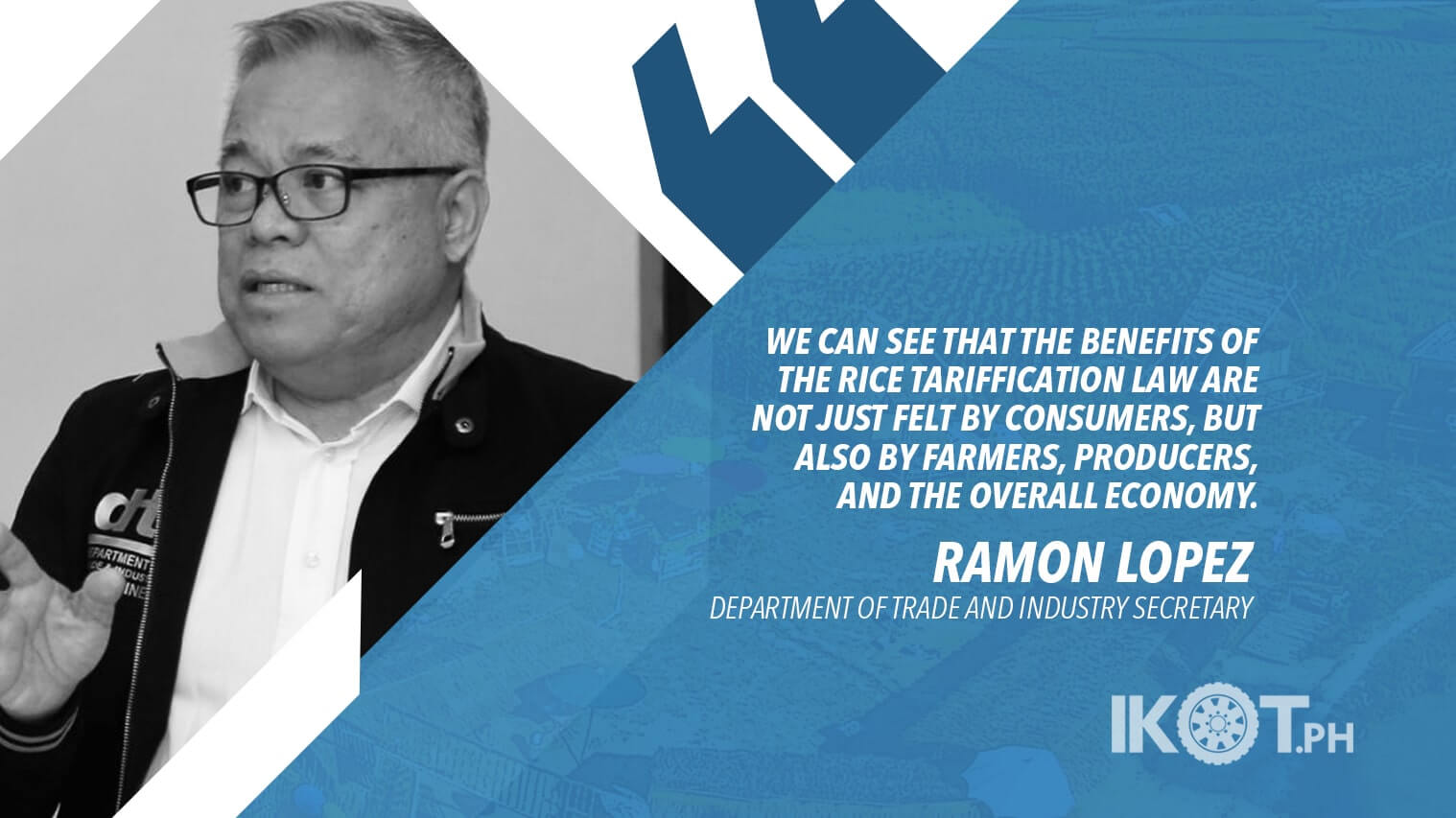During the press conference updating the public on the Rice Tariffication Law (RTL), Trade Secretary Ramon Lopez lauded the “game-changing” measure for bringing down retail prices of regular milled rice and well-milled rice to a seven-year low since the start of its implementation last March 5, 2019.
“From the DTI perspective, we are always after the impact on the consumers. We’ve been watching closely and helping temper prices of rice. We are glad to report that with the Rice Tariffication Law, we really see a huge difference from the record-high average price of regular milled rice at P41/kg and well-milled rice at P49/kg in September 2018,” Lopez said.
Based on data by the Philippine Statistics Authority (PSA), the average price of regular milled rice was recorded at P36.32/kg while the average price of well-milled rice was at P41.23/kg during the first three weeks of February.
The retail price of regular milled rice was at the lowest since December 2013 when it stood at P36.18/kg, while the retail price of well-milled rice was at the lowest since May 2016 when it hit P41.19/kg.
The trade chief even shared that during their price monitoring rounds in groceries and wet markets, he and his team saw well-milled rice prices ranging from P36 to P38 per kilo with some selling at P34/kg when purchasing 10 kilos.
The trade head expressed optimism that the Law would see the “best to come” in the coming years given the biggest P10B fund that will support farmers in improving their productivity and lowering their production cost; thus, increasing their income.
Among the provisions of the Rice Tariffication Law is the P10-B Rice Competitive Enhancement Fund (RCEF), which provides programs to improve agricultural productivity, competitiveness, and profitability.
Agriculture Secretary William Dar explained that the funds will be used to help mechanize operations, distribute certified seeds, provide trainings, and assist in financing.
“During the first seven months of implementation, the revenues from the imposed tariffs reached P12.3B.”
According to the Department of Finance (DOF), during the first seven months of implementation until December 2018, the revenues from the imposed tariffs reached P12.3 B.
Dar reported that the additional P2.3 B will be used for crop diversification and insurance that will help farmers increase profits.
“Rice Tariffication Law was instrumental at curbing inflation.”
“Aside from the direct benefit to consumers and farmers, RTL was instrumental at curbing inflation from the record-high 6.7 % in October 2018, which was outside the government’s target rate of 2.0-4.0 %, to 0.8 % in October 2019, the slowest pace in over three years,” explained Lopez.
Meanwhile, National Economic Development Authority (NEDA) Assistant Secretary Mercedita Sombilla highlighted the impact of rice prices in the overall inflation, reporting that in October 2018, rice inflation was at 10.7 % while rice inflation in October 2019 was posted at -9.7 %. In January 2020, headline inflation was recorded at 2.9 %, well within the government’s target, while rice inflation was posted at -6.5%.
“We can see that the benefits of the Rice Tariffication Law are not just felt by consumers, but also by farmers, producers, and the overall economy. Tunay ngang sa Rice Tariffication Law, ang bayan ang panalo,” Lopez concluded.

